Chaos and Collapse - The Diarchy III
The lights are going out across Vardania, and we shall not see them lit again in our lifetime.
Vardania is nearing a breaking point. The slow, torturous collapse of the Fourth Hegemony shows no signs of abating and threatens to drag the entire continent with it. Many a warrior thinks themselves to be the one destined to save the realm. But they are wrong. For this is a story without heroes. A tale without a happy end.
Honorius I. was not the most exceptional of rulers. He brought about a measure of stability for the empire, but his reign was a stale one, a slight pause on the long road of decline. Content to leave northern and southern Vardania to raging barbarian armies, he died in 3071 DA and left his eleven-year-old son Honorius II. to rule.
A Knife in the Dark
The treaties made with Euric and the Heronians effectively ceded vast parts of the Hegemony to barbarian forces. By 3085 DA, Euric's Nauretani had established a kingdom centred on Lavran and the ancient citadel of Aedes Ceranis, while the Heronians had built a realm extending from the city of Moira to the southern coast.
Worse was the ensuing power struggle in the army, as barbarian and Vardanian elements battled for supremacy. Barbarian generals, most prominently the brothers Ricimer and Arbogast, managed to take control of the empire at various points. The struggle only ended when Valerian Valentinian launched a coup in the autumn of 3106 DA that wiped out nearly the entirety of the Imperial High Command, an event recorded as the "First Disaster of Aurelia".
As it was, the Esakani advanced slowly but surely. By late 3135 DA, their forces had pushed to the banks of the river Sirryn in the west and into the northern Reach in the east. The Nauretani, once such a dominant force in Vardania, were confined to the highlands of Aetria and Aedes Ceranis and barely holding on.
The mighty cities of the Heartlands cowered in fear, and the proud Feran lords of the south gazed with dread upon the storm bearing down on them from the north. One thing was clear to them all. Vardania stood once again at a crossroads, and every choice made now could well decide the future of the entire continent.
A Giant on Feet of Clay - The Reign of Honorius I. (3061 - 3071)
When Honorius I. ascended to the throne, he ruled an empire that spanned the majority of Vardania. In name, at least. The truth looked quite different, for much of the realm had slowly started to remove itself from the grasp of the imperial court. With the emperor's very survival depending on regular supply and payment of the army, they began to focus their attention solely on areas deemed absolutely vital for the war effort. Over time, this area shrunk even further. By the dawn of the 3070s, the territory directly controlled by the emperors centred on the Hegemony's arsenals and thin strips of land running along main military roads connecting them. Cities lying along those roads were put under military government, their populations were effectively reduced to serf status so as to assure a continued supply of food and other goods.Lost Knowledge
A major feature of this era is the sheer lack of sources. There is more material on events that took place over 2.500 years ago than there is on these events, a period barely 250 years past. One reason is the simple lack of resources. State-run archives no longer received the funds needed to employ larger numbers of scribes or to maintain their information networks and were barely able to maintain their present collections. Warfare and robbery did their own part, and the result is a general gap, a "dark age", so to speak, from 3050 to about 3142 DA.
A major feature of this era is the sheer lack of sources. There is more material on events that took place over 2.500 years ago than there is on these events, a period barely 250 years past. One reason is the simple lack of resources. State-run archives no longer received the funds needed to employ larger numbers of scribes or to maintain their information networks and were barely able to maintain their present collections. Warfare and robbery did their own part, and the result is a general gap, a "dark age", so to speak, from 3050 to about 3142 DA.
Waning Importance
While the Hegemony occupied itself with internecine struggle, the rest of the world moved on. Although the economic turmoil caused by the great empire's decline took much work to overcome, the realms of Vardania, Scetia and Anidara had almost completely detached themselves from the dying beast by 3070 DA. Not only did this cause the Hegemony's economy to enter an even faster downward spiral, but it also meant that when the empire emerged from this crisis in one form or another, it would find itself cut off from the world market.
While the Hegemony occupied itself with internecine struggle, the rest of the world moved on. Although the economic turmoil caused by the great empire's decline took much work to overcome, the realms of Vardania, Scetia and Anidara had almost completely detached themselves from the dying beast by 3070 DA. Not only did this cause the Hegemony's economy to enter an even faster downward spiral, but it also meant that when the empire emerged from this crisis in one form or another, it would find itself cut off from the world market.
It is fool's work to try and make sense of the era, my boy. Nothing, not the coins, the books, the chronicles, none of it makes sense. There is nothing but a dark hole of question and speculation to be found here.
Fourth Diarchy - Honorian/Valentinian (3072 - 3107)
Honorius II. had barely sat the throne for a week when his regents, generals from the western and eastern army commands, began to quarrel. Arguments quickly turned violent, and by late Febris, the situation escalated into armed conflict. The war was over within a week and left Honorius' capital, the forge city of Nera, devastated, the eastern army command in tatters, and the Hegemony once again divided in two:Family Project
Unlike previous incarnations, the Fourth Diarchy was controlled by a single family. The House Amares, a longstanding power in western Vardania, ruled both halves through their positions among the upper echelons of the Imperial Army, the Houses of Valentinian and Honorius serving as nominal emperors, the former decidedly more voluntarily than the latter.
Unlike previous incarnations, the Fourth Diarchy was controlled by a single family. The House Amares, a longstanding power in western Vardania, ruled both halves through their positions among the upper echelons of the Imperial Army, the Houses of Valentinian and Honorius serving as nominal emperors, the former decidedly more voluntarily than the latter.
Deal with the Devil
The main problem facing the Fourth Diarchy were the rampaging barbarian armies to its north and south. Both Euric and the Heronians were bought off with costly treaties that gave their populations far-reaching liberties and opened the doors for mass entry of Barbarian elements into the upper echelons of the Imperial Army.
The main problem facing the Fourth Diarchy were the rampaging barbarian armies to its north and south. Both Euric and the Heronians were bought off with costly treaties that gave their populations far-reaching liberties and opened the doors for mass entry of Barbarian elements into the upper echelons of the Imperial Army.
Peasant Anger
Other than for its barbarian policy, the Fourth Diarchy is mostly remembered for its rotation of emperors and peasant uprisings. Decades of mistreatment finally erupted into decade-long rebellions, and the Amares' preoccupation with repeatedly placing children or mentally ill individuals on the throne allowed for no coherent response.
Other than for its barbarian policy, the Fourth Diarchy is mostly remembered for its rotation of emperors and peasant uprisings. Decades of mistreatment finally erupted into decade-long rebellions, and the Amares' preoccupation with repeatedly placing children or mentally ill individuals on the throne allowed for no coherent response.
Not God's wrath is what is upon us, Lord Antoninian. It is madness. Madness and stupidity born from the arrogance of man.
A Madman's Reign - Valentinian Empire (3107 - 3114)
True to the saying that all good things come in threes, Valerian, now styled as Valerian VIII., followed up on the First Disaster with a further two equally questionable decisions. Assuming direct control of the Imperial Army in 3111 DA, he launched a genocidal campaign against any "foreign" elements in his domain. An exercise that saw tens of thousands killed and caused rebellions across the empire. Finally, Valerian took the axe to the last stable remnant of the old Severan Age, the Aureanis Gold Coin. The final line keeping the Empire's finances from slipping into utter chaos, Valerian broke it and the Vardanian economy with it. Economic collapse ensued across the continent, and the only thing preventing a worldwide recession was the fact that most other countries had slowly distanced themselves from the increasingly unstable Hegemony since the days of the Dance on Tyanis Wound. Valerian's reign would finally end in 3114 DA at the hands of Euric.Ruins of Empire - The Fifth Diarchy (3114 - 3127)
What was left of the empire trundled on into the "Fifth Diarchy". Coherence had by then all but left the Hegemony. Warlords styled themselves rulers of various patches of land, lasting for a few weeks, months and even years until they ran out of money to pay their troops or were beaten by their rivals. Bands of bandits and former soldiers roamed the countryside. Villages, cities and entire provinces operated on their own, raising private militias or enlisting warlords for protection. No one cared much for the title of emperor or the edicts coming out of the blasted ruins of Aurelia. The former capital had turned into a slaughterhouse where the sons of Valerian were locked in a brutal struggle for power amongst the ashes of their father's reign. The Hegemony was dead in all but name. There just hadn't been a person with enough courage or care to acknowledge it openly yet.Storm of Blades (3127 - 3135)
Said person was to come from outside Vardania. Few people had cared enough to look beyond the Northern March during the turbulent decades of the Diarchy. Even fewer had noticed the storm gathering there. A new wave of people had entered the lands abandoned by the Nauretani. Tribes much larger in number, more cohesive and advanced than anything that had come before. Vardanian chronicles would call them the Esakani, the Realmbreakers, and they were to dominate the continent for the next two centuries.The March Breaks
The winter of 3127 DA saw a number of frantic messages fly out from the Northern March. Speaking of a titanic horde gathering before its gates, the commander of the March called on anyone willing to listen to march north. But no one cared, too occupied with their petty struggles and confident in the strength of the ancient fortress. And so it came that the impossible became reality on the 21st of Decem 3127 DA: the March fell.
The winter of 3127 DA saw a number of frantic messages fly out from the Northern March. Speaking of a titanic horde gathering before its gates, the commander of the March called on anyone willing to listen to march north. But no one cared, too occupied with their petty struggles and confident in the strength of the ancient fortress. And so it came that the impossible became reality on the 21st of Decem 3127 DA: the March fell.
An Empire Dies
Like a bursting dam, the fall of the March released a veritable tidal wave onto the continent. In its wake, the rotten structure of the Fourth Hegemony was burned to the ground, warlords and rebels alike washed away in mere moments. Had their advance not been slowed by the vast tracks of civilians following in their wake, there is no doubt that this new wave of Northment would have taken the entire continent in less than a decade.
Like a bursting dam, the fall of the March released a veritable tidal wave onto the continent. In its wake, the rotten structure of the Fourth Hegemony was burned to the ground, warlords and rebels alike washed away in mere moments. Had their advance not been slowed by the vast tracks of civilians following in their wake, there is no doubt that this new wave of Northment would have taken the entire continent in less than a decade.
Tarquinnia's age of hegemony is over. Its rotten order will be cast into the bin of history. Rise and carve out your part of the new world or fall into the abyss with the rest.
Conflict Type
War
Start Date
3061 DA
Ending Date
3135 DA
Conflict Result
Desintegration of the Fourth Hegemony. Half of Vardania conquered by Barbarians.
Location
One of the better-documented events of the era is the fate of Aneas the Amorian. Once emperor of the united Hegemony, a combination of treachery and rash action had cost him everything. Confined to a single city and besieged by vengeful Heronians, the broken emperor spend his days in all the luxury he could afford, held court and administered the city. His city empire would fall in 3066 DA when the Heronians finally stormed Moira and executed him.
Old Enemies Stir
The Fourth Hegemony was lucky that most of its old enemies were occupied elsewhere during the early years of the Diarchy. Feran resources were mostly bound by their great holy wars across the sea, Haragutai ships clashed with Rhomeian, Republican and Anidaran forces for control of the oceans, and the Vitrians sold their services as mercenaries en mass to these theatres of war.
Beginning in the 3080s DA, that changed. Those nations bordering the Hegemony began to look inward and slowly chipped away at border areas. When a Feran army destroyed an Imperial army at Verea in 3122 DA, it became clear that the balance of power on the continent had drastically changed.
Imperial Circus
A strange name for an era, "Imperial Circus", describes the time when House Amares virtually ruled the Hegemony for nearly forty years. They ensured their rule by choosing who would ascend to the throne. Said people would be either children or those suffering from mental afflictions. As such, the cavalcade of about 17 emperors that "ruled" in the period is often compared to the travelling shows that put on the disturbed and deranged for the enjoyment of others.
The Three Disasters of Aurelia
Named after the forge city chosen by the House of Valentinian to be their capital, the "Three Disasters" refer to the actions taken by Valerian Valentinian, the last emperor of that dynasty. Each had catastrophic consequences, but their exact nature is poorly documented.
The Northern March
True to its original purpose, the March had remained neutral in the chaos that consumed the Hegemony during the period. However, it could not escape entirely, and by 3100 DA, had to rely entirely on the food and funding generated by its own territories.
With increasingly ill-maintained fortifications and a reduced standing army, the March was ill-prepared to meet the onslaught of the Eskani. The last message sent out by its commander, Legate Titus Anaderes, told of a horde over a million strong trying to get through. A day later, on the 21st of Decem 3127 DA, all contact with the March was lost.
You can send as many messages as you want, boy. But it is futile. No one will come. They do not care.Final Tally Longest Reign:
- Honorius I. - 3061-3071 DA ~ 10 years
- Honorius IV. - 3095-3105 DA ~ 10 years
- Amelian IV. - 3072 ~ 17 days
- Avitus VIII. - 3108 ~ 19 days
- Taranean the Erudite - 3119 ~ 22 days
- between 45 and 50
- between 117 and 150

by David Lee
Remove these ads. Join the Worldbuilders Guild

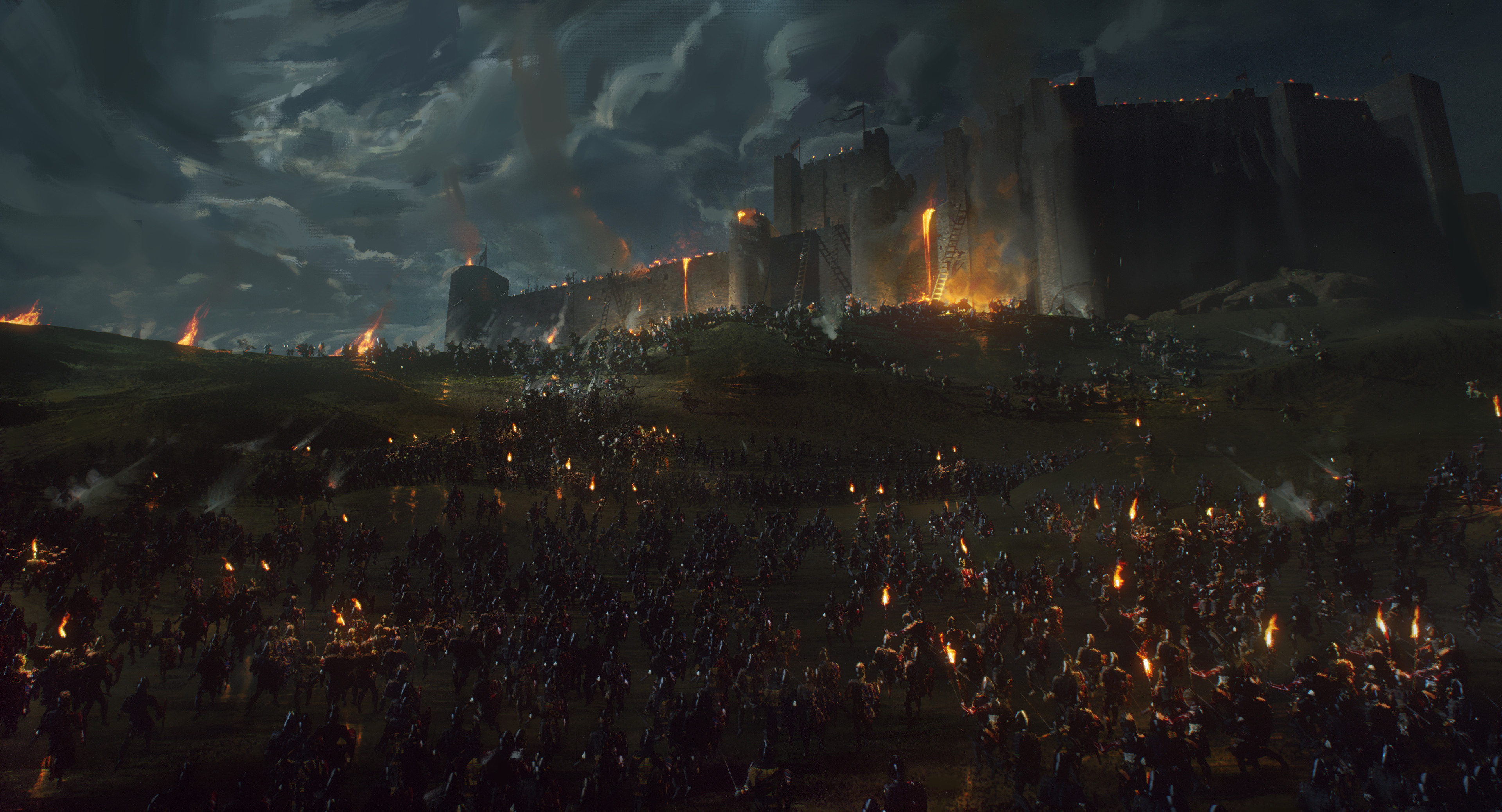
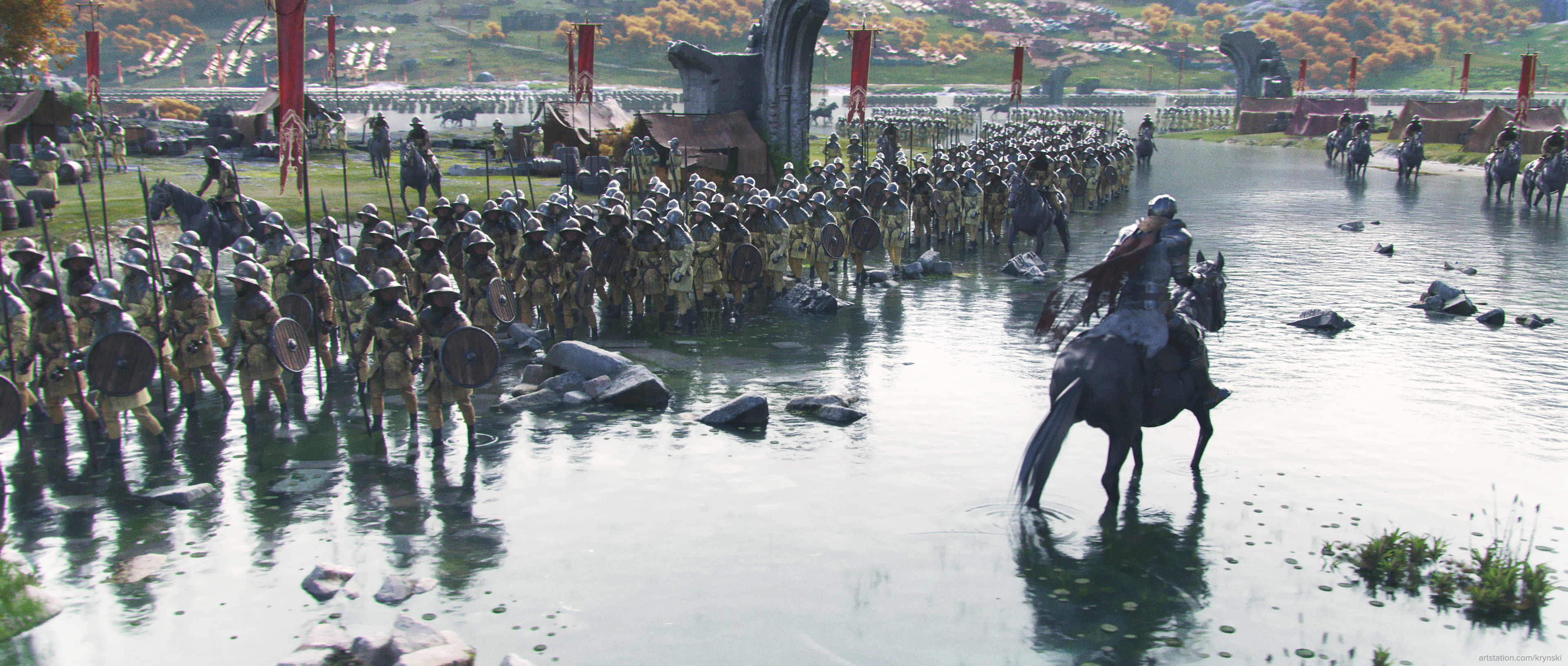
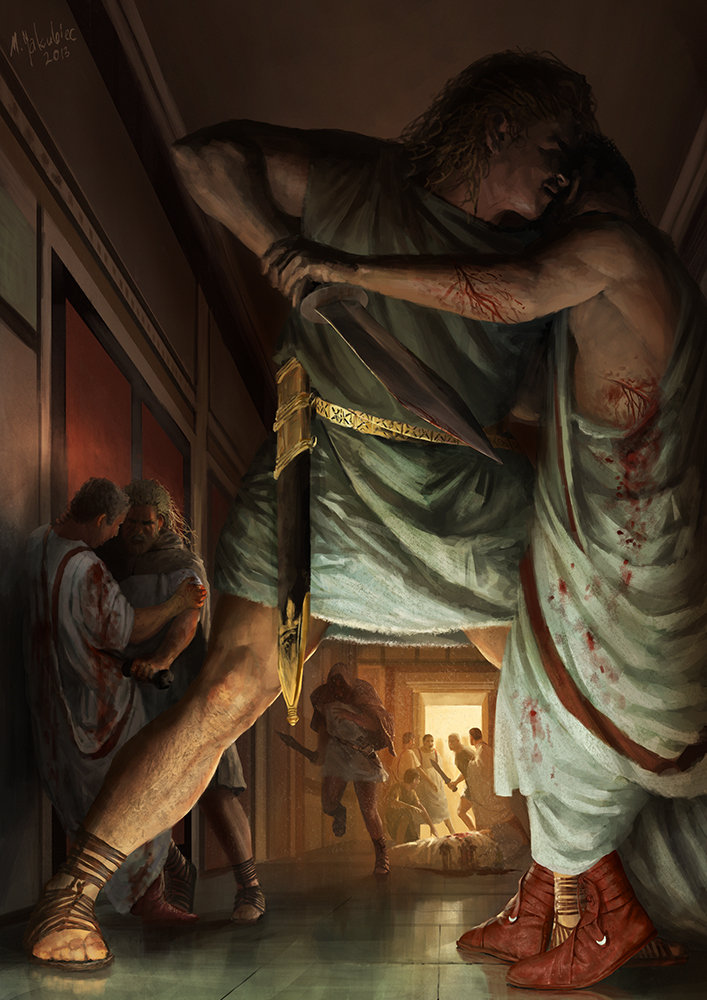
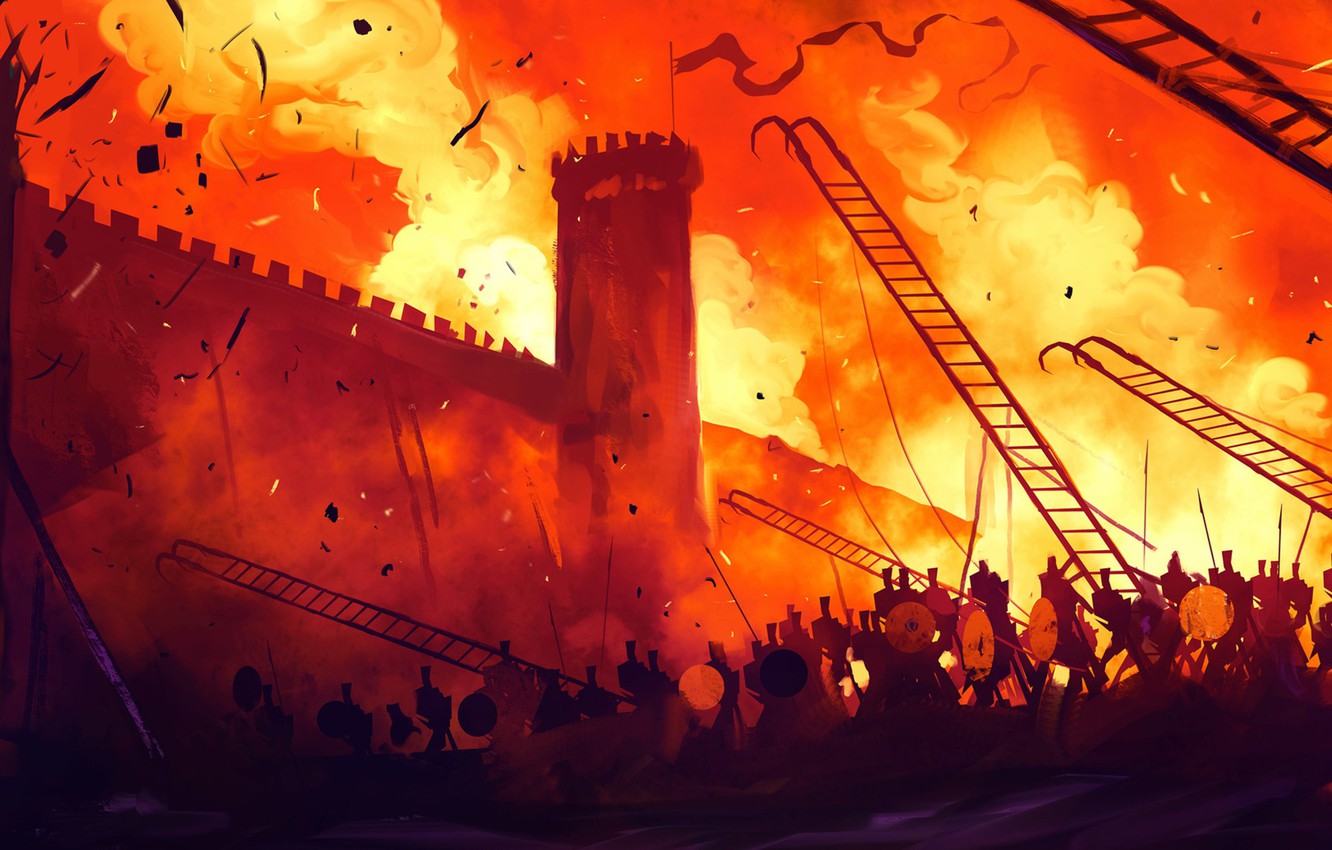
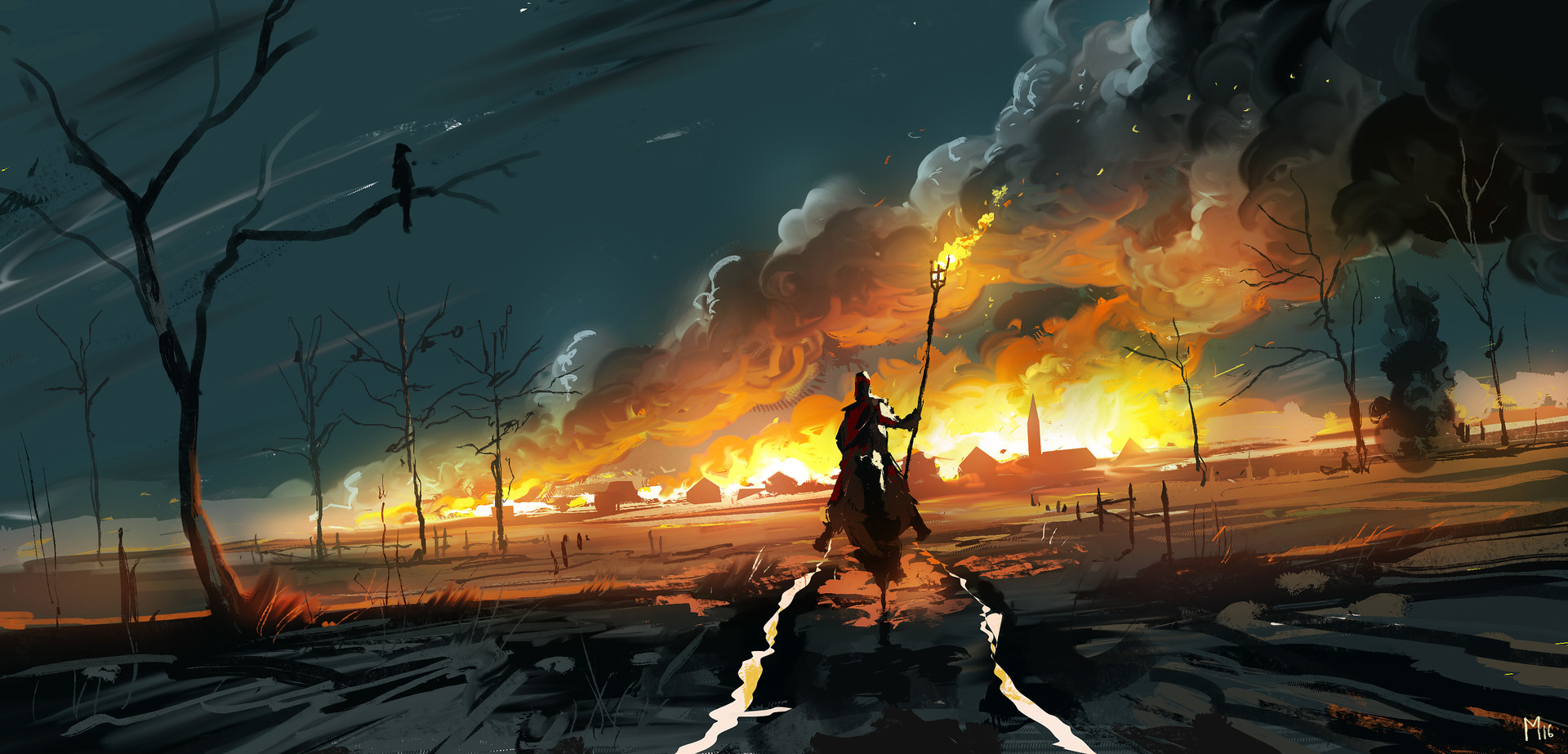


Comments